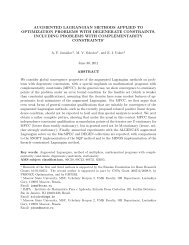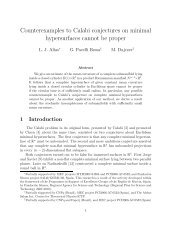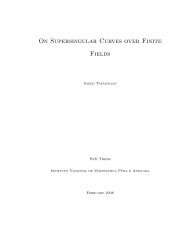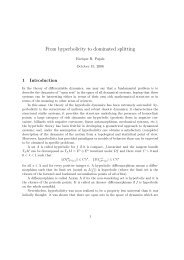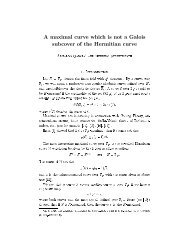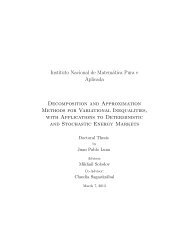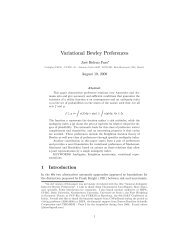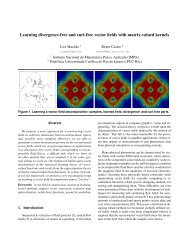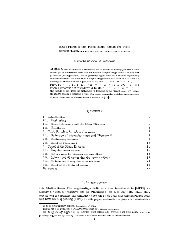a reduced model for internal waves interacting with submarine ...
a reduced model for internal waves interacting with submarine ...
a reduced model for internal waves interacting with submarine ...
You also want an ePaper? Increase the reach of your titles
YUMPU automatically turns print PDFs into web optimized ePapers that Google loves.
0.5<br />
0.4<br />
0.3<br />
0.2<br />
η<br />
0.1<br />
0<br />
−0.1<br />
−0.2<br />
−0.3<br />
0 10 20 30 40 50 60<br />
ξ<br />
Figure 4.10: Pulse propagating over a synthetic periodic slowly-varying topography.<br />
Dashed line: initial condition. Dotted line: numerical solution <strong>for</strong> the LCM<br />
using RK4 <strong>for</strong> t=36.3247 and N= 1024, vertical bars mark spatial intervals of<br />
size 2.5133 that fall together <strong>with</strong> the end of each period of the reflected signal.<br />
defined on the domain [0, 16π] as<br />
⎧<br />
⎪⎨ 1+0.5 sin(5ξ), <strong>for</strong> 6π≤ξ≤12π,<br />
M(ξ)=<br />
⎪⎩ 1, elsewhere.<br />
The initial perturbation of the interface is the Gaussian function<br />
η 0 (ξ)=0.5e −a(ξ−π)2 /64<br />
<strong>with</strong> a=200 and effective width L=2.4. The ratio inhomogeneities/wavelength<br />
is about 0.5236. The physical parameters areρ 1 = 1,ρ 2 = 2,β=0.0001,α=<br />
0.01. We employ N= 1024,∆ξ=2l/N= 0.0491,∆t=∆ξ=0.0491. In Fig. 4.11<br />
the numerical solution <strong>for</strong> t=32.3977 is depicted together <strong>with</strong> the exact solution<br />
77



